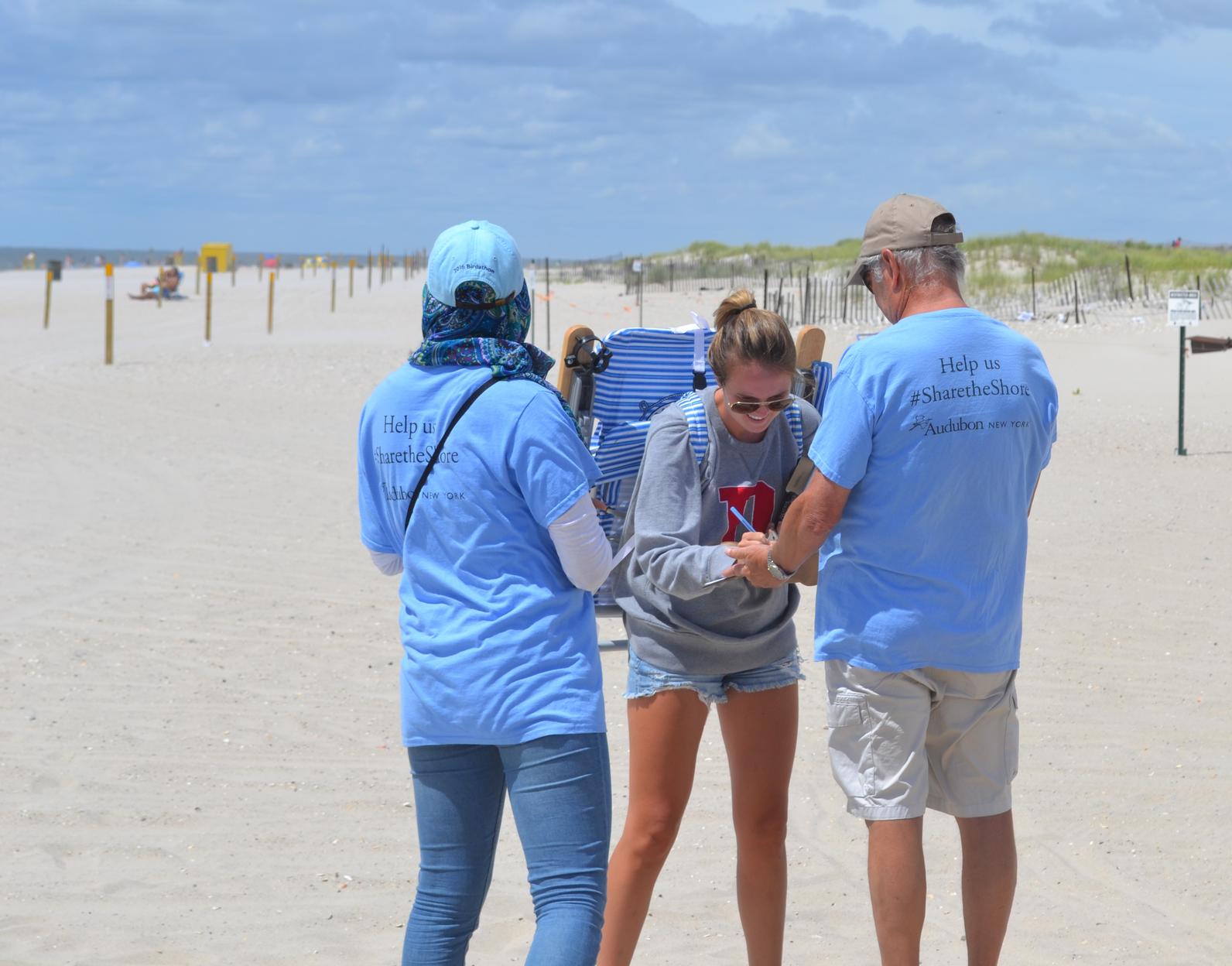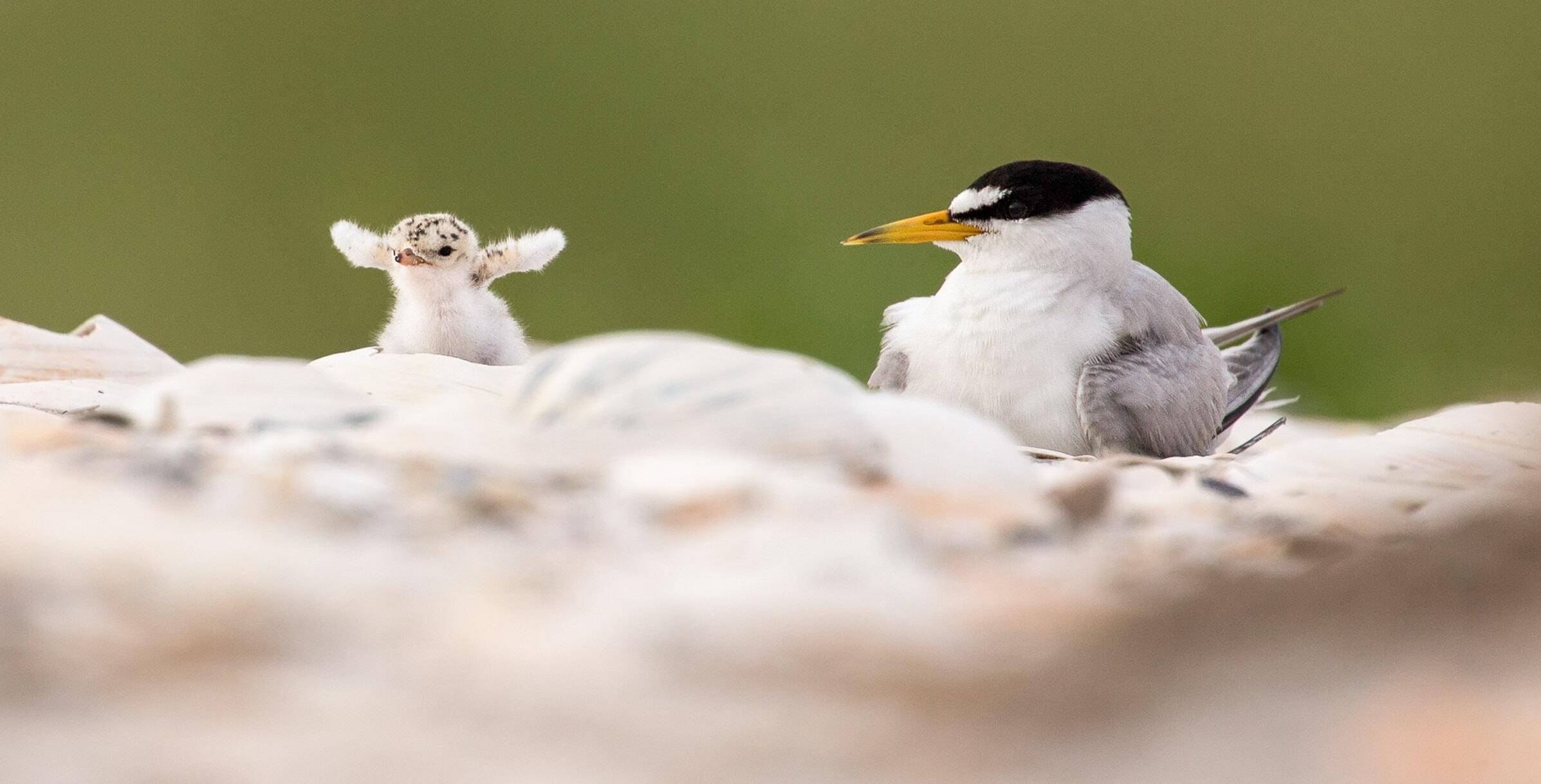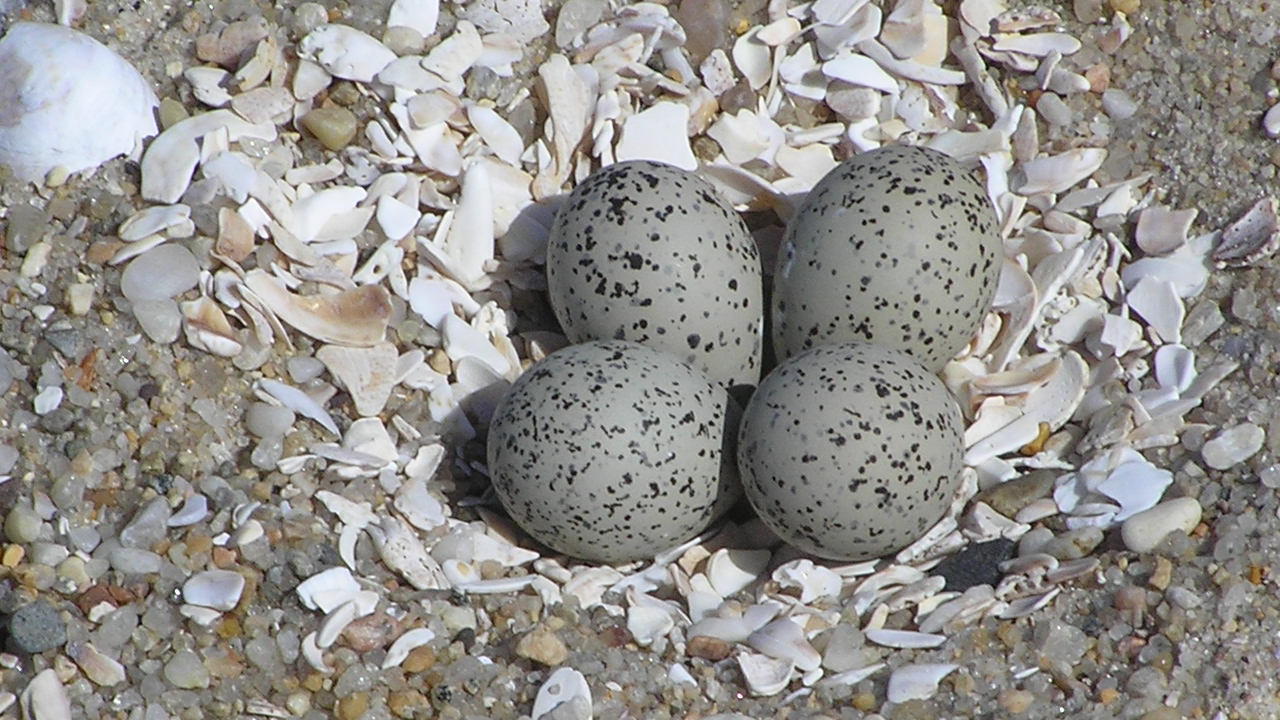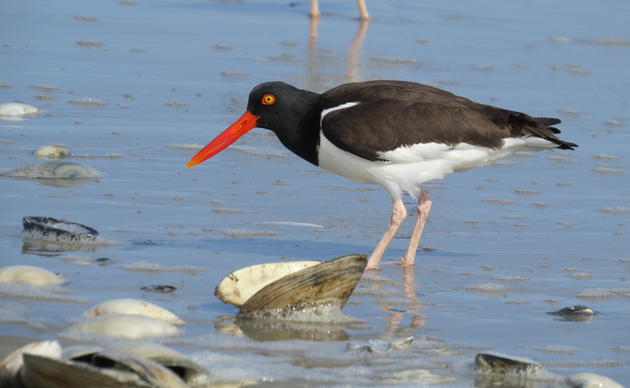“Be a Good Egg” is an outreach initiative that is implemented by Audubon staff, chapters, volunteers, and other conservation partners. We strive to reduce human disturbance threats to coastal birds by encouraging people to “share the shore” with birds while visiting the beach.
Beach-nesting birds like the Piping Plover rely on beaches for nesting and sheer survival. They lay well-camouflaged eggs directly on the ground, usually on sand or shells. The beach is their only home, and individual birds often return to the same place year after year to raise their young. In the spring and fall, many other shorebirds, including the Red Knot, migrate through New York on journeys that can be as long as 9,000 miles, stopping on our beaches to rest and refuel.
Many of our shorebird and seabird populations are federally and/or state-listed or are of conservation concern. They are threatened by coastal development and engineering, climate change, predators, and human disturbance.
It’s important for recreationists to do their part and respect these birds while at the beach. When a person or dog walks through a nesting area, the adults run or fly off in fear. During the nesting season, this exposes the eggs or chicks to fatally high temperatures and drastically increases the risk of predation. Off-leash dogs and cats can kill or injure birds, especially flightless chicks. Trash on the beach can entangle birds, be mistaken for food and ingested, and can attract predators.
Click here to take the Be a Good Egg Pledge
You can help give birds the space they need to safely rest, nest, feed, and raise their young by taking the Good Egg pledge to:
- Respect fenced-off areas where birds are nesting;
- Properly dispose of or carry out your trash; and,
- Keep your dog off of nesting beaches.
With your help, we can protect New York’s beach-nesting and migratory coastal birds.
This program was originally piloted by Audubon North Carolina. Audubon New York, New Jersey Audubon, and New York City Audubon worked together to launch the program in New Jersey and New York in 2013. Since then, under the guidance of Audubon New York, the program has expanded to include new partners on Long Island, NY, including the Four Harbors, Huntington Oyster Bay, Great South Bay, North Fork, North Shore, and South Shore Audubon societies, Group for the East End, and others. We partnered with Adelphi University to rebrand our logo and with Virginia Tech University to evaluate the effectiveness of our outreach events. We also partner with local land managers, including the Town of Hempstead, The New York State Office of Parks, Recreation and Historic Preservation, the Town of Oyster Bay, and the Town of Brookhaven to bring this program to a variety of Long Island beaches. Other Audubon offices and Chapters are conducting similar work in other states. Thank you to all of our volunteers and partners for making this program possible!

Partial program support comes from CSX and National Fish and Wildlife Foundation’s Long Island Sound Futures Fund.
For more information and to sign up to volunteer, email NYcoast@audubon.org. For updates on our current work and outreach event schedules, visit our “Be a Good Egg” Facebook page.
Donate to Audubon
Help secure the future for birds at risk from climate change, habitat loss and other threats. Your support will power our science, education, advocacy and on-the-ground conservation efforts.






